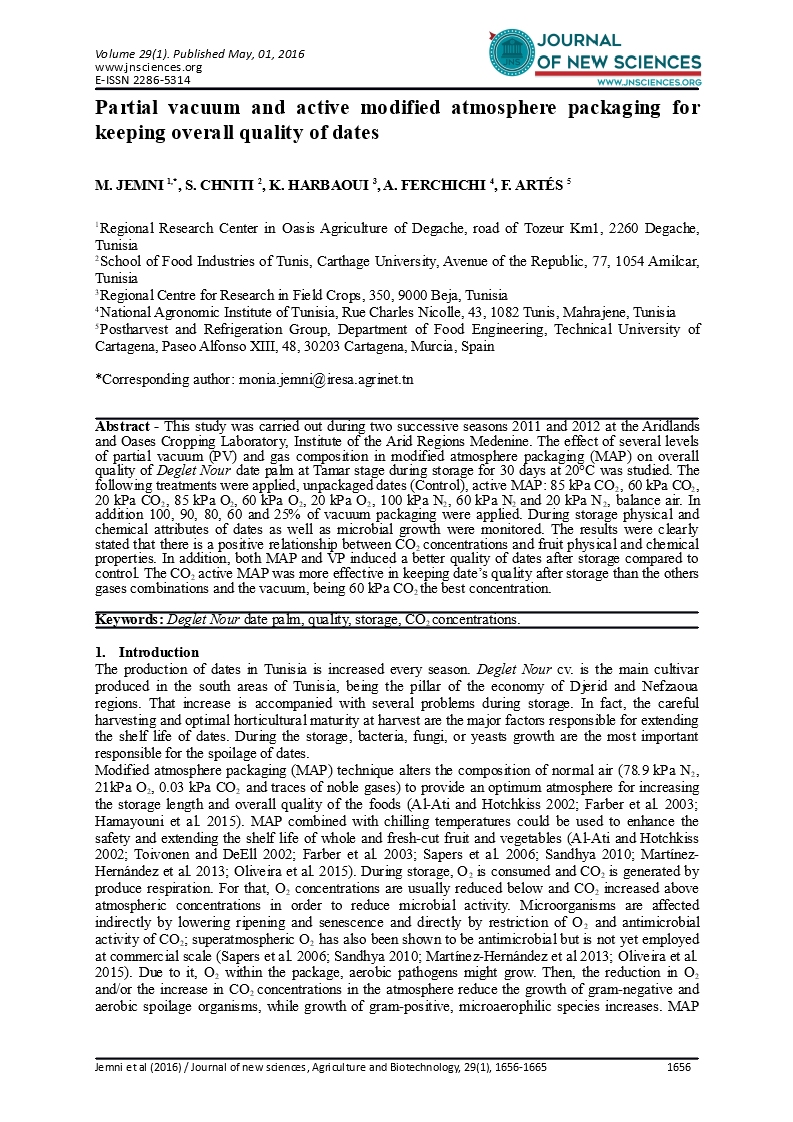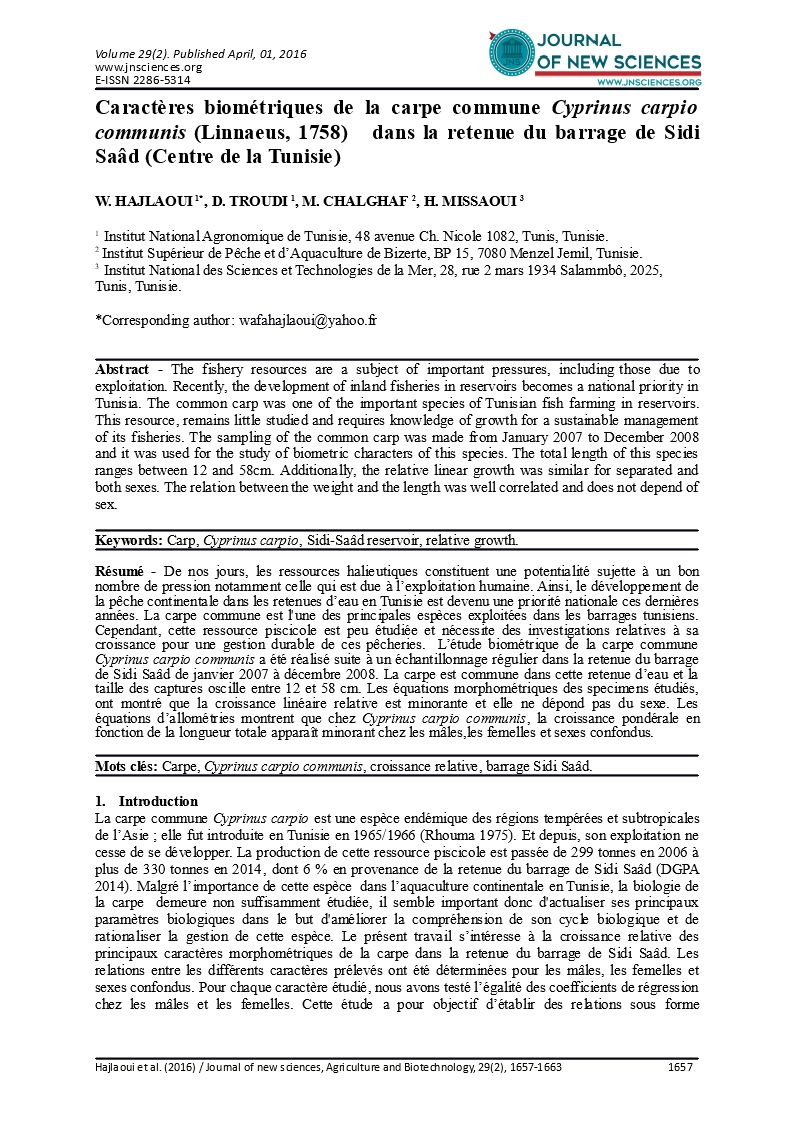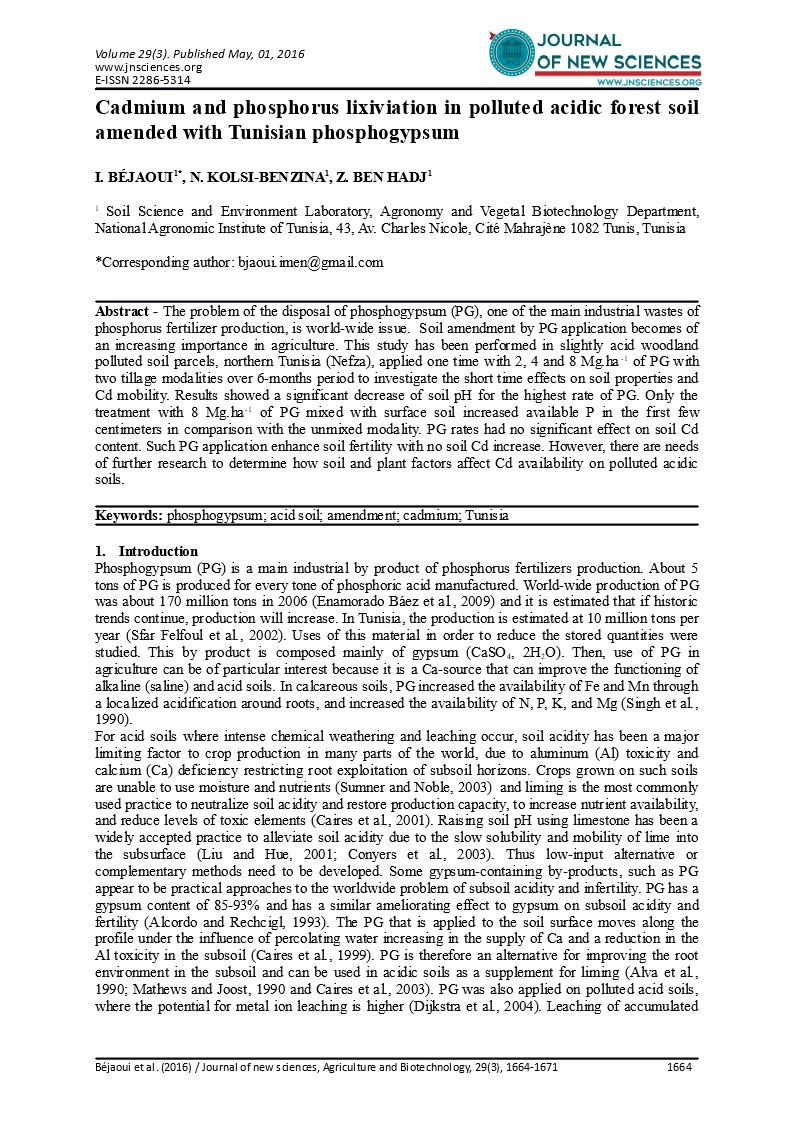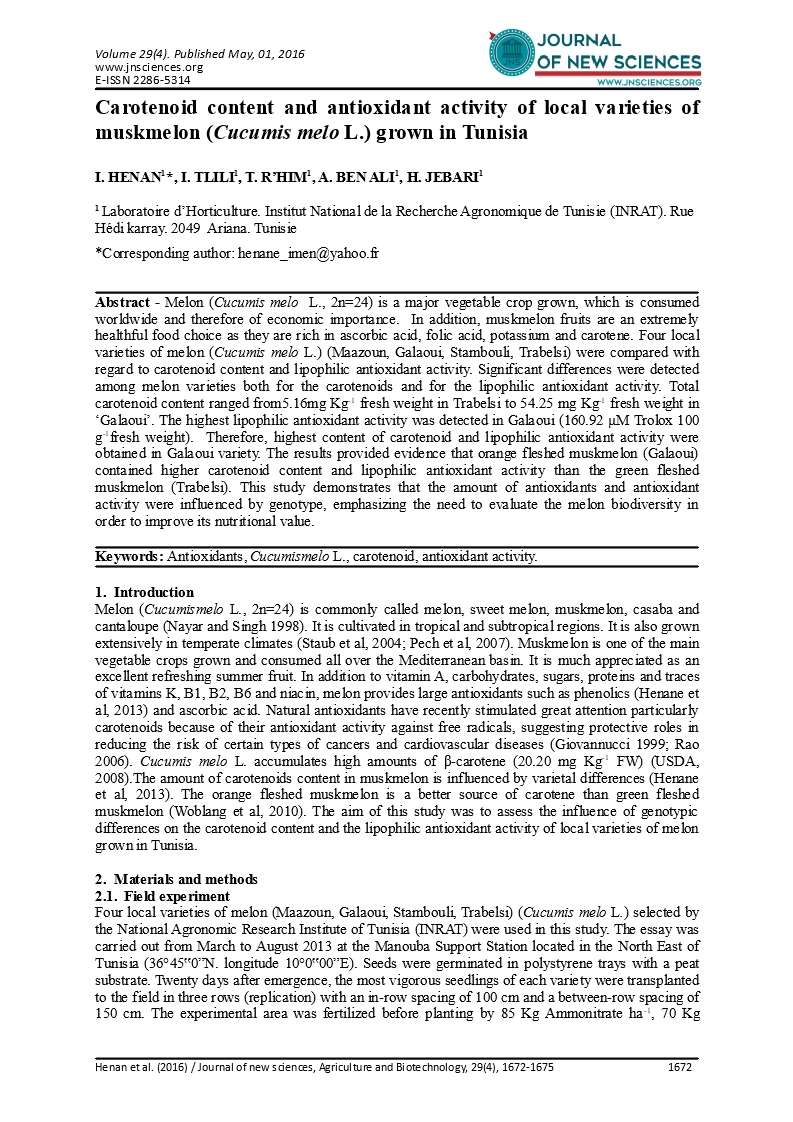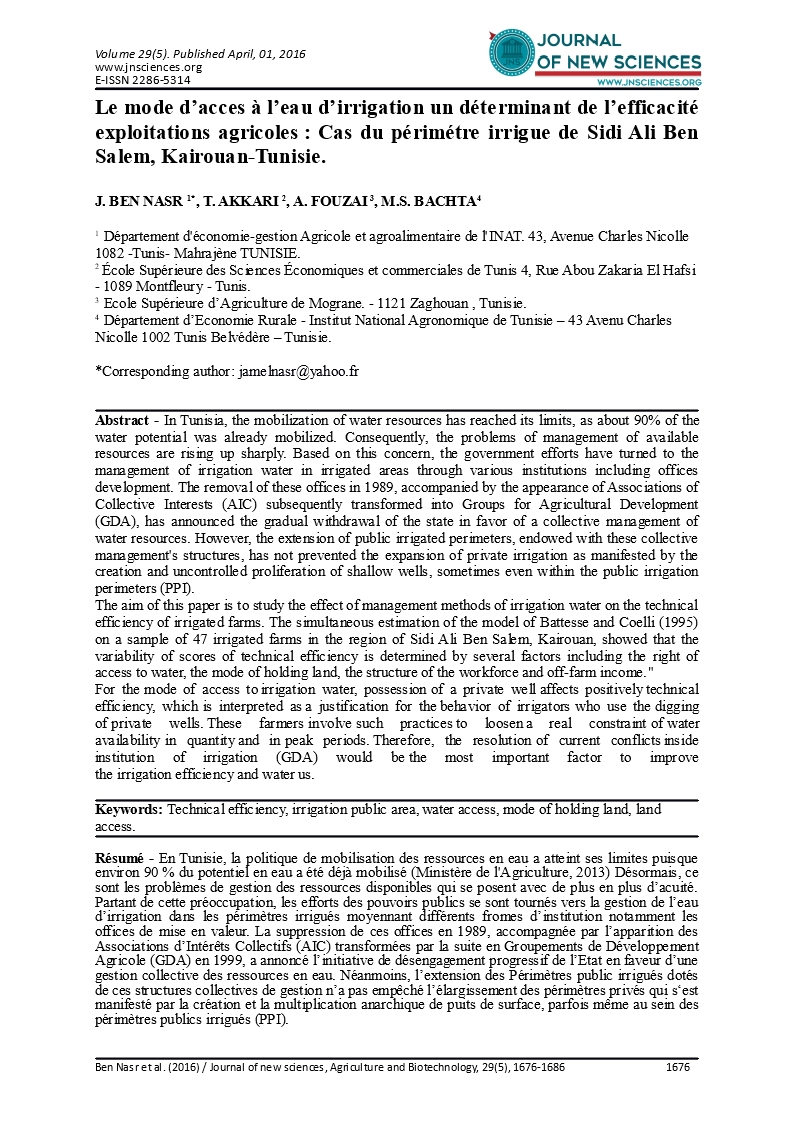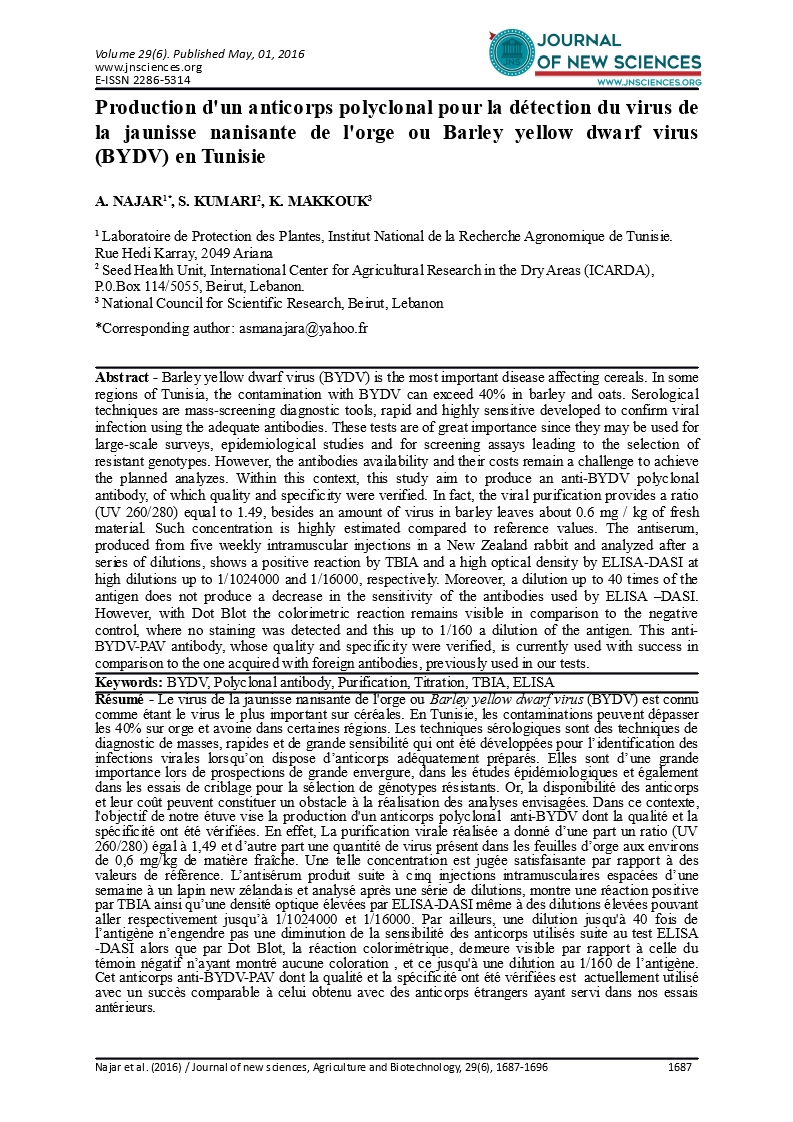A. NAJAR1*
S. KUMARI2
K. MAKKOUK3
1 Laboratoire de Protection des Plantes, Institut National de la Recherche Agronomique de Tunisie. Rue Hedi Karray, 2049 Ariana
2 Seed Health Unit, International Center for Agricultural Research in the Dry Areas (ICARDA), P.0.Box 114/5055, Beirut, Lebanon.
3 National Council for Scientific Research, Beirut, Lebanon
Abstract - Barley yellow dwarf virus (BYDV) is the most important disease affecting cereals. In some regions of Tunisia, the contamination with BYDV can exceed 40% in barley and oats. Serological techniques are mass-screening diagnostic tools, rapid and highly sensitive developed to confirm viral infection using the adequate antibodies. These tests are of great importance since they may be used for large-scale surveys, epidemiological studies and for screening assays leading to the selection of resistant genotypes. However, the antibodies availability and their costs remain a challenge to achieve the planned analyzes. Within this context, this study aim to produce an anti-BYDV polyclonal antibody, of which quality and specificity were verified. In fact, the viral purification provides a ratio (UV 260/280) equal to 1.49, besides an amount of virus in barley leaves about 0.6 mg / kg of fresh material. Such concentration is highly estimated compared to reference values. The antiserum, produced from five weekly intramuscular injections in a New Zealand rabbit and analyzed after a series of dilutions, shows a positive reaction by TBIA and a high optical density by ELISA-DASI at high dilutions up to 1/1024000 and 1/16000, respectively. Moreover, a dilution up to 40 times of the antigen does not produce a decrease in the sensitivity of the antibodies used by ELISA –DASI. However, with Dot Blot the colorimetric reaction remains visible in comparison to the negative control, where no staining was detected and this up to 1/160 a dilution of the antigen. This anti-BYDV-PAV antibody, whose quality and specificity were verified, is currently used with success in comparison to the one acquired with foreign antibodies, previously used in our tests.
Keywords: BYDV, Polyclonal antibody, Purification, Titration, TBIA, ELISA
Résumé - Le virus de la jaunisse nanisante de l'orge ou Barley yellow dwarf virus (BYDV) est connu comme étant le virus le plus important sur céréales. En Tunisie, les contaminations peuvent dépasser les 40% sur orge et avoine dans certaines régions. Les techniques sérologiques sont des techniques de diagnostic de masses, rapides et de grande sensibilité qui ont été développées pour l’identification des infections virales lorsqu’on dispose d’anticorps adéquatement préparés. Elles sont d’une grande importance lors de prospections de grande envergure, dans les études épidémiologiques et également dans les essais de criblage pour la sélection de génotypes résistants. Or, la disponibilité des anticorps et leur coût peuvent constituer un obstacle à la réalisation des analyses envisagées. Dans ce contexte, l'objectif de notre étuve vise la production d'un anticorps polyclonal anti-BYDV dont la qualité et la spécificité ont été vérifiées. En effet, La purification virale réalisée a donné d’une part un ratio (UV 260/280) égal à 1,49 et d’autre part une quantité de virus présent dans les feuilles d’orge aux environs de 0,6 mg/kg de matière fraîche. Une telle concentration est jugée satisfaisante par rapport à des valeurs de référence. L’antisérum produit suite à cinq injections intramusculaires espacées d’une semaine à un lapin new zélandais et analysé après une série de dilutions, montre une réaction positive par TBIA ainsi qu’une densité optique élevées par ELISA-DASI même à des dilutions élevées pouvant aller respectivement jusqu’à 1/1024000 et 1/16000. Par ailleurs, une dilution jusqu'à 40 fois de l’antigène n’engendre pas une diminution de la sensibilité des anticorps utilisés suite au test ELISA -DASI alors que par Dot Blot, la réaction colorimétrique, demeure visible par rapport à celle du témoin négatif n’ayant montré aucune coloration , et ce jusqu'à une dilution au 1/160 de l’antigène. Cet anticorps anti-BYDV-PAV dont la qualité et la spécificité ont été vérifiées est actuellement utilisé avec un succès comparable à celui obtenu avec des anticorps étrangers ayant servi dans nos essais antérieurs.
Mots clés: BYDV, Anticorps polyclonal, Purification, Titration, TBIA, ELISA
Read more
